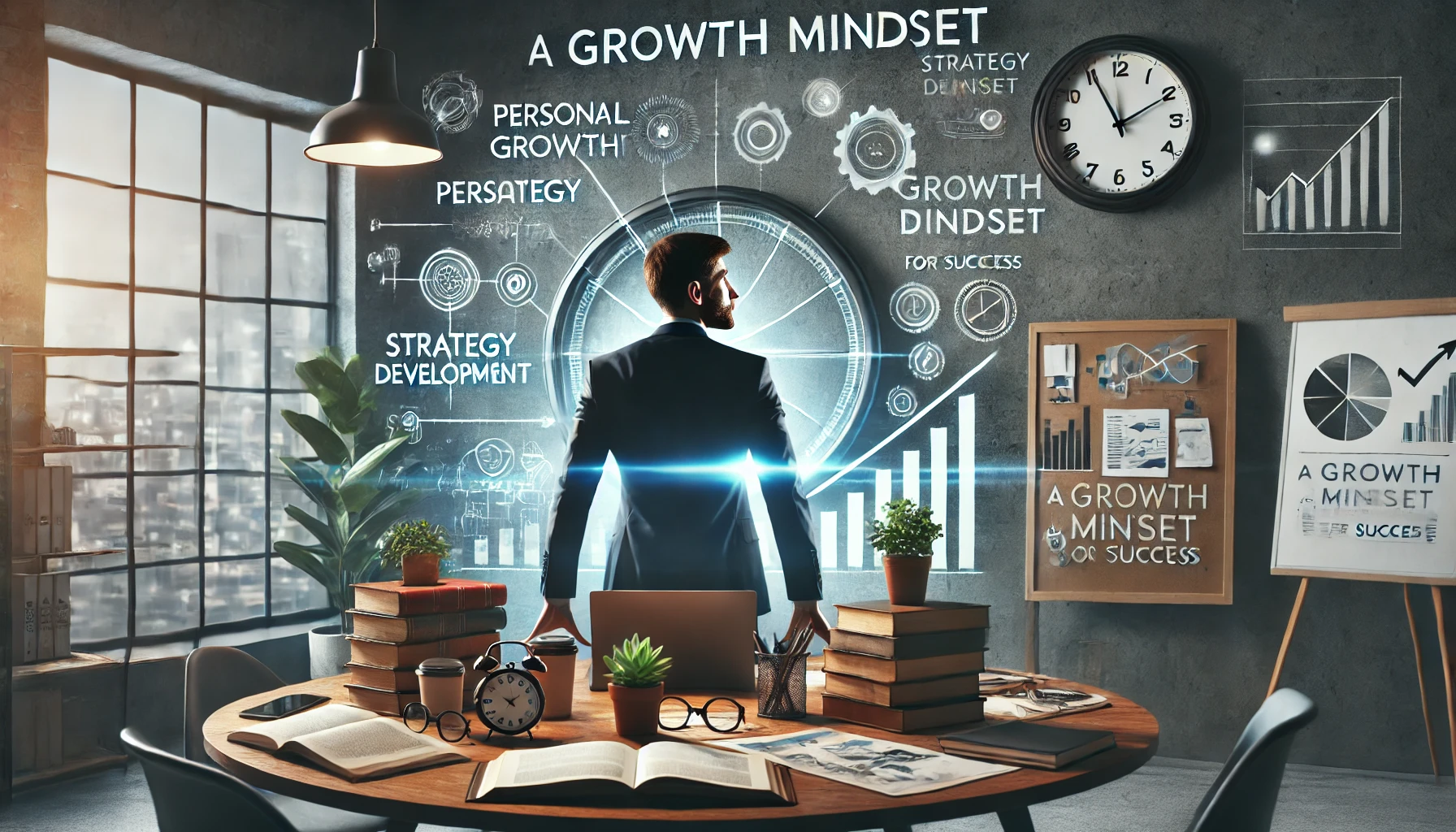A growth mindset is the belief that skills, intelligence, and abilities can be developed through effort and learning. In business, this mindset is essential for overcoming challenges, adapting to change, and achieving long-term success.
In this article, we’ll explore how to cultivate a growth mindset and use it to drive business success.
1. What is a Growth Mindset?
The concept of a growth mindset was developed by psychologist Carol Dweck. It contrasts with a fixed mindset, where people believe their abilities are limited.
🔹 Growth Mindset vs. Fixed Mindset
| Growth Mindset ✅ | Fixed Mindset ❌ |
|---|---|
| Challenges are opportunities to learn | Challenges are threats to avoid |
| Failures are lessons for improvement | Failures are proof of inability |
| Effort leads to progress and mastery | Talent is fixed, effort doesn’t matter |
| Feedback is helpful for growth | Feedback is criticism to ignore |
💡 Example: Entrepreneurs like Elon Musk and Jeff Bezos embrace challenges and failures as learning experiences, driving innovation.
2. Benefits of a Growth Mindset in Business
✅ Encourages innovation – You’re more open to trying new strategies.
✅ Builds resilience – Setbacks become learning opportunities.
✅ Enhances leadership skills – You inspire teams to push beyond limits.
✅ Improves problem-solving – You look for solutions instead of giving up.
3. How to Develop a Growth Mindset
🔹 1. Embrace Challenges
✅ View obstacles as stepping stones to success.
✅ Take on new projects outside your comfort zone.
✅ See failures as part of the learning process.
💡 Example: Steve Jobs was fired from Apple but used the setback to grow, later returning and revolutionizing the company.
🔹 2. Learn from Failure and Feedback
✅ Analyze what went wrong and adjust your approach.
✅ Seek constructive criticism instead of avoiding it.
✅ Turn mistakes into lessons for improvement.
💡 Example: Thomas Edison made 1,000 failed attempts before inventing the light bulb, stating, “I have not failed. I’ve just found 1,000 ways that won’t work.”
🔹 3. Develop a Love for Continuous Learning
✅ Read books, take courses, and stay updated with trends.
✅ Surround yourself with people who challenge and inspire you.
✅ Adopt a “beginner’s mindset” – Always be open to new ideas.
💡 Example: Bill Gates reads 50 books a year to expand his knowledge and stay ahead.
🔹 4. Set Goals and Focus on Progress
✅ Break large goals into small, manageable steps.
✅ Track progress and celebrate small wins.
✅ View improvement as a continuous journey.
💡 Example: Serena Williams didn’t become a world champion overnight—she practiced daily and improved step by step.
🔹 5. Surround Yourself with Growth-Oriented People
✅ Network with entrepreneurs, mentors, and innovators.
✅ Seek advice from those who push you to grow.
✅ Avoid negative influences that limit your thinking.
💡 Example: Facebook’s early success was driven by a team of ambitious, forward-thinking individuals.
4. Practical Steps to Apply a Growth Mindset in Business
✔ Encourage innovation and experimentation in your company.
✔ Motivate employees to take initiative and develop new skills.
✔ Adapt to changes in the market instead of resisting them.
✔ See competition as inspiration, not as a threat.
Conclusion: Your Mindset Shapes Your Success
Developing a growth mindset isn’t just a personal benefit—it’s a business strategy. By embracing challenges, learning from mistakes, and continuously improving, you position yourself and your business for long-term success.
What’s one area of your business where you can apply a growth mindset today? 🚀
